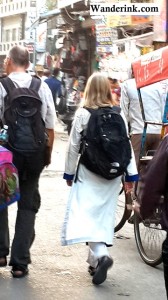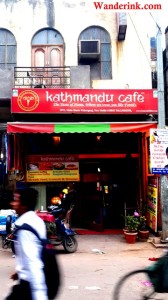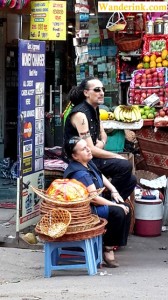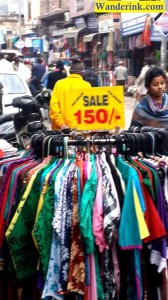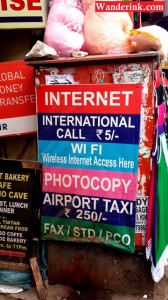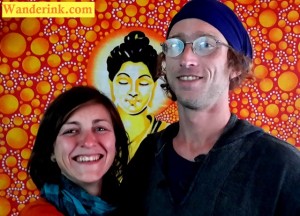The cab went around the landmark state secretariat building for the third time making the passenger, a tourist, suspicious.
“But didn’t we pass by here earlier?” he asked, cautious, not wanting to offend the affable, garrulous driver.
“Sir,” the cabbie replied, in his die-rather-cheat tone, “in Trivandrum we have six of them.”
This could have been either a comment on tourist gullibility or a joke on cabbie cleverness but definitely before GSM mapping. Today wired fares direct taxis and auto rickshaws through the shortest route amid embarrassed protestations of ‘dharna’ or other roadblocks along the way. Contrary to what MapQuest tells you and unless maybe you are an LFT, ‘getting lost’ is an espresso shot at cultural immersion – where you ask your way around, talk to natives and even befriend some. Skyscanner is an efficient aggregator alright but getting pally with travel agents has been known to go a long way in the experiential quest – there is always a brother or a cousin who is a cabbie/guide or runs a homestay in your next destination. No doubt these apps do come with a price but on the upside you feel good that you weren’t taken for a ride. You have also hopefully left the indelible impression that the rest of your backpacker ilk shouldn’t be messed with either. More tangibly, money was saved.
Saving money figures right up there on the backpacker priority list. With hygiene alerts and virulent outbreaks, slumming is not prudent anymore; rundown dorms are no more the norm but B&B and homestays rule the roost. Food and transport are the other two overheads which take a sizeable toll on the budget. Over the years i have been making occasional forays into the boisterous bustle of Delhi’s Paharganj, where backpackers make a beeline for – like Thamel in Kathmandu or Sukhumvit, Bangkok – to catch up with some friends, intrepid travellers all, passing through. Here are a few money-saving tips they developed and perfected while on the trail. While a few reiterations might be considered classics, some are technology-led and some, like the last one, are to be tried only if you have an abundant charm, like Matthew.
A for ashram
In addition to bed and breakfast arrangements and homestays, youth hostels (featuring international guest houses) are another cheap accommodation options which are quite clean and usually conveniently located. If you are on a spiritual quest – or just looking for something different – there are the ashrams which are attached to temples offering clean linen and a vegetarian diet. But these accommodations are invariably shared. Many Hindu temples like Iskcon and Christian retreat centres offer this facility. Strict adherence to schedules and curfew hours will be expected though.
B for bhojanalaya
When it comes to fresh, homemade food the thumb rule is a blackboard menu. Many houses in the touristy Taj Ganj around the Taj Mahal have extended dining areas where they serve food to budget travellers. I was amazed at the relish with which ‘roti, sabzi and dal-chawal’ was consumed by westerners – many of whom were regulars – at a small house lit by a groaning bulb. The homely arrangement or generally any inexpensive but delish eating outlet is a ‘bhojanalaya’ and can be found in most of the touristy areas. If you happen to be near a gurudwara, a Sikh temple, find the timings of the langar or the free kitchen. A great way to watch people and get a free meal.
Clothes – seconds thoughts
Save a bundle by doing your own laundry…and by not being very particular about what you wear on the road. By ‘what’ i mean the brand not how much you cover. Fab India, the eternal traveller favourite, has been turning expensive of late making the backpacker turn to Palika Bazaar or Sarojini Market in Delhi, Fashion Street or Colaba Causeway in Mumbai, Old City in Hyderabad, or Brigade Street in Bengaluru. These places have plenty of shops dealing with clothes and accessories discarded by other travellers or export rejects.
Shoo the cab
Stick to public transport as much as you possibly can. With most of the cities connected by an impressive network of roads and railways it is not that difficult either. Hire a cab only if there are no other means of reaching your destination; even then ‘shared cabs’ ply most of the hinterland routes. The ‘shared cab’ could be anything from an electric rickshaw to a jeep to a minibus. While within cities, weather permitting, walk as much as you can between points. There are apps that even show you the most picturesque route. And yes, and if you are hiring a cab or rickshaw, either be forewarned about the rates or forearmed with the route. The Metro rail system might seem chaotic and haphazard at first but if you are planning be around for a while, a Metro pass would be the quickest way to get about.
Shoot with the tab
That cameras are charged additionally at entry points to heritage and other sites begs evasion; there again ‘still photography’ and video cameras attract separate, quite disparate, fees. I mean, why would a tourist be there at all if not to take pictures. Take photographs on your iPad without paying a dime; monument and museum caretakers have no idea what to do with those shooting with their ‘computer’. Surely, it’s a matter of time but till then knock yourself out.
Prepaid cards and free calls
Seasoned travellers take a prepaid phone card the moment they land in India and spend a few hundred rupees on a basic mobile handset as well. Coordinating with travel and local buddies are done over text messages – cheaper and clearer. If you have 3G, then of course there is Viber. These handsets are usually sold off to other tourists or over online classified marketplaces before they return.
Travel off season
‘Off season doesn’t mean that the place has taken a break from looking beautiful.’ In fact, off season also means great deals and discounts on shopping and accommodation. It also means fewer tourists to bump into. Tourist season in India starts in October and goes on till end of March. June, July and August is a great time to chase the monsoon; though balmy the weather is pleasant in September.
No harm in asking
“Is that the best you can do?” has many a time managed to procure a complimentary breakfast for me. It might be really convenient to make a booking online but do make a call and follow it up with a talk – about the weather, political conditions, hotel amenities – before asking for better rates. Talking invariably turns out to be better procurers of good rates than just asking.
Splendid mirror work, thanks for the chai
“All i have to do is stare at the garments or some other stuff outside the shop. Somebody will come rushing out and I will tell him that the rug or jacket or whatever is pretty. He will, without fail, invite me into his shop to check out the ‘prettier’ wares. I will feign disinterest but he will insist, sometimes even drag me inside. Once inside I am heaped with endless cups of chai and sometimes even samosa or sweetmeats. After I have my fill, I will thank him profusely for his kindness. The mirror-work sari? Oh, I have to come back later for that.”
Matthew who travelled India extensively with friend Milica shares his ‘tip’ with a laugh. But over the chai, Matthew says, there is so much information and insights being changed hands about India which can never be found in any guidebook.
Indeed a lot can happen over chai too!



